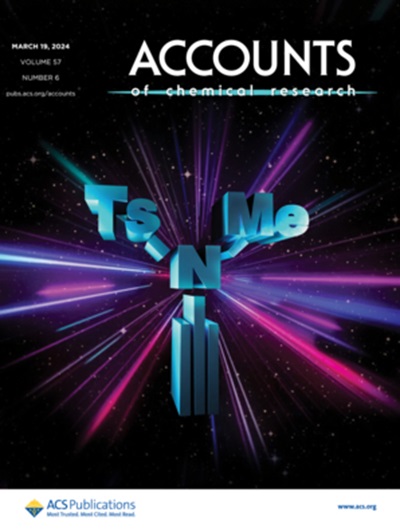Mid-Cretaceous wood of Waihere Bay, Pitt Island, Chatham Islands, New Zealand
IF 17.7
1区 化学
Q1 CHEMISTRY, MULTIDISCIPLINARY
引用次数: 0
Abstract
The mid-Cretaceous is an important time for the diversification of forests globally, including the rise to dominance of the angiosperms and the beginning of the isolation of Zealandia. In New Zealand, little information is available on the mid-Cretaceous xyloflora. New specimens of fossil wood from the mid-Cretaceous Tupuangi Formation were collected from Waihere Bay, Pitt Island, Chatham Islands, of which 16 well-preserved samples were identified, representing Araucariaceae (Agathoxylon, 5 samples), Cupressaceae (Taxodioxylon and Cupressinoxylon, one sample each), Podocarpaceae (Protophyllocladoxylon, one sample), and the ‘Group B’ and ‘Group C’ Mesozoic conifers (four samples each) defined in Bamford & Philippe (2008). Of these, only Taxodioxylon had been identified previously from the Tupuangi Formation. Two new species are erected, Cupressoxylon dianneae sp. nov. and Protophyllocladoxylon jacobusii sp. nov. These records are important for understanding the mid-Cretaceous flora of New Zealand and the history of the unique modern flora of New Zealand.新西兰查塔姆群岛皮特岛怀赫海湾的中白垩纪木材
白垩纪中期是全球森林多样化的重要时期,包括被子植物崛起并占据主导地位,以及西兰西亚开始与世隔绝。在新西兰,有关白垩纪中期木犀属植物的信息很少。研究人员从查塔姆群岛皮特岛的怀海湾采集了白垩纪中期图普安吉地层的新木化石标本,并对其中 16 个保存完好的样本进行了鉴定,这些样本代表了 Araucariaceae(Agathoxylon,5 个样本)、Cupressaceae(Taxodioxylon 和 Cupressinoxylon,各一个样本)、Podocarpaceae(Protophyllocladoxylon,一个样本),以及 Bamford 和 Philippe(2008 年)定义的 "B 组 "和 "C 组 "中生代针叶树(各四个样本)。其中,只有 Taxodioxylon 以前在图普安吉地层中被鉴定过。两个新物种:Cupressoxylon dianneae sp.nov.和 Protophyllocladoxylon jacobusii sp.nov.。这些记录对于了解新西兰白垩纪中期植物区系以及新西兰独特的现代植物区系的历史非常重要。
本文章由计算机程序翻译,如有差异,请以英文原文为准。
求助全文
约1分钟内获得全文
求助全文
来源期刊

Accounts of Chemical Research
化学-化学综合
CiteScore
31.40
自引率
1.10%
发文量
312
审稿时长
2 months
期刊介绍:
Accounts of Chemical Research presents short, concise and critical articles offering easy-to-read overviews of basic research and applications in all areas of chemistry and biochemistry. These short reviews focus on research from the author’s own laboratory and are designed to teach the reader about a research project. In addition, Accounts of Chemical Research publishes commentaries that give an informed opinion on a current research problem. Special Issues online are devoted to a single topic of unusual activity and significance.
Accounts of Chemical Research replaces the traditional article abstract with an article "Conspectus." These entries synopsize the research affording the reader a closer look at the content and significance of an article. Through this provision of a more detailed description of the article contents, the Conspectus enhances the article's discoverability by search engines and the exposure for the research.
 求助内容:
求助内容: 应助结果提醒方式:
应助结果提醒方式:


